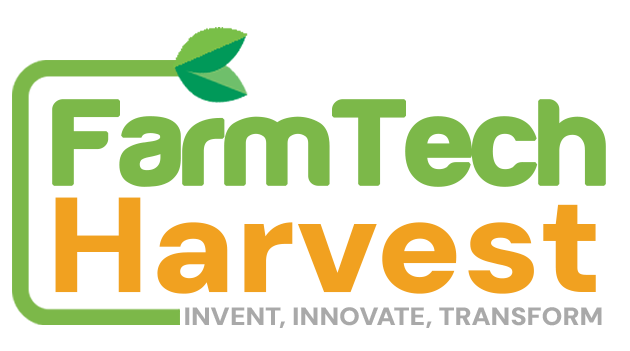In recent years, the agricultural industry has witnessed a significant transformation due to advancements in technology. Traditional farming practices are being revolutionized by innovative tools and techniques, enabling farmers to enhance productivity, reduce costs, and minimize environmental impact. This article explores the various ways in which technology is transforming farming practices and the potential benefits it brings to the agricultural sector.
Table Of Contents
1. Introduction
Farming has traditionally relied on manual labor and intuition, but with the advent of technology, the agricultural landscape is rapidly changing. Farmers now have access to advanced tools and systems that allow for more precise and efficient farming practices. These technological advancements have the potential to revolutionize the industry and address the challenges faced by modern agriculture.
2. Precision Agriculture: Enhancing Efficiency and Sustainability
Precision agriculture involves the use of technology to optimize farming practices at a granular level. By utilizing sensors, satellite imagery, and GPS technology, farmers can monitor soil conditions, moisture levels, and crop health with greater accuracy. This data-driven approach enables them to make informed decisions regarding irrigation, fertilization, and pest management, resulting in improved resource allocation and reduced environmental impact.
3. Automated Machinery: Streamlining Farm Operations
The introduction of automated machinery has transformed farming operations by reducing the reliance on manual labor. Machines equipped with advanced technologies can perform tasks such as planting, harvesting, and sorting crops with greater efficiency and precision. This not only saves time but also increases productivity and minimizes operational costs for farmers.
4. Internet of Things (IoT): Real-Time Monitoring and Data-driven Insights
The Internet of Things (IoT) has enabled the integration of various devices and sensors into the farming ecosystem. These devices collect real-time data on weather conditions, soil moisture, and crop growth, among other parameters. By analyzing this data, farmers can gain valuable insights into their operations, optimize resource utilization, and make timely decisions to improve productivity.
5. Drones and Remote Sensing: Aerial Surveillance for Better Crop Management
Drones equipped with advanced imaging and sensing capabilities have become valuable tools in modern farming practices. They can provide detailed aerial views of farmland, helping farmers identify areas of concern such as pest infestations or nutrient deficiencies. With this information, farmers can take targeted actions to address these issues, leading to healthier crops and higher yields.
6. Robotics and Artificial Intelligence: Revolutionizing Harvesting and Weeding
Robotic systems powered by artificial intelligence are revolutionizing harvesting and weeding processes. These robots can autonomously navigate fields, identify ripe crops, and harvest them with precision. By automating these labor-intensive tasks, farmers can reduce costs, improve efficiency, and alleviate the challenges associated with labor shortages.
7. Vertical Farming: Cultivating Crops in Controlled Environments
Vertical farming involves growing crops in vertically stacked layers using controlled environments such as indoor facilities or greenhouses. This technology allows for year-round cultivation, irrespective of weather conditions. By optimizing factors like light, temperature, and nutrient levels, farmers can achieve higher yields in smaller spaces while conserving water and reducing the need for pesticides.
8. Genetic Engineering: Improving Crop Traits and Resistance
Advancements in genetic engineering have opened up new possibilities for crop improvement. Scientists can now modify plant DNA to enhance desirable traits such as resistance to diseases, pests, or environmental stress. This technology enables farmers to cultivate more resilient and high-yielding crops, ultimately increasing food production and ensuring global food security.
9. Data Analytics: Optimizing Decision-Making Processes
The abundance of data collected through various technological systems can be harnessed through data analytics. By leveraging advanced analytics tools, farmers can gain valuable insights into their operations, identify trends, and optimize decision-making processes. This allows them to adjust farming practices in real-time, resulting in improved productivity, reduced waste, and enhanced profitability.
10. Farm Management Software: Integrated Solutions for Farm Operations
Farm management software provides farmers with comprehensive tools to manage various aspects of their operations. These solutions assist in tasks such as crop planning, inventory management, and financial analysis. By streamlining administrative processes, farmers can focus more on strategic decision-making and operational efficiencies.
11. Challenges and Considerations in Adopting Agricultural Technology
While technology offers immense potential for transforming farming practices, there are challenges and considerations that need to be addressed. These include the initial investment costs, infrastructure requirements, cybersecurity concerns, and the need for education and training. Overcoming these challenges will require collaboration among stakeholders to ensure a smooth and sustainable adoption of agricultural technology.
12. The Future of Farming: Innovations on the Horizon
The evolution of technology in agriculture shows no signs of slowing down. Future innovations may include advancements in biotechnology, nanotechnology, and autonomous farming systems. These innovations will continue to drive productivity, sustainability, and resilience in the agricultural industry, further shaping the way we grow and consume food.
13. Conclusion
Technology is reshaping the agricultural landscape, empowering farmers with tools and techniques that enhance productivity, efficiency, and sustainability. From precision agriculture and automated machinery to IoT and robotics, the possibilities for improving farming practices are vast. As the world faces challenges like population growth and climate change, embracing technology in agriculture becomes crucial for ensuring global food security and sustainable farming practices.
FAQs (Frequently Asked Questions)
- Q: How does precision agriculture benefit farmers?
- Precision agriculture benefits farmers by optimizing resource allocation, reducing costs, and minimizing environmental impact through data-driven decision-making.
- Q: What are the advantages of vertical farming?
- Vertical farming allows for year-round cultivation, higher yields in smaller spaces, and reduced reliance on pesticides and water.
- Q: How can drones help in crop management?
- Drones provide aerial surveillance, helping farmers identify crop issues such as pests or nutrient deficiencies for targeted action.
- Q: What is the role of artificial intelligence in farming?
- Artificial intelligence enables robotics to autonomously perform tasks like harvesting and weeding, reducing labor costs and improving efficiency.
- Q: What are the future prospects for agricultural technology?
- The future of agriculture holds innovations in biotechnology, nanotechnology, and autonomous farming systems, further driving productivity and sustainability.

